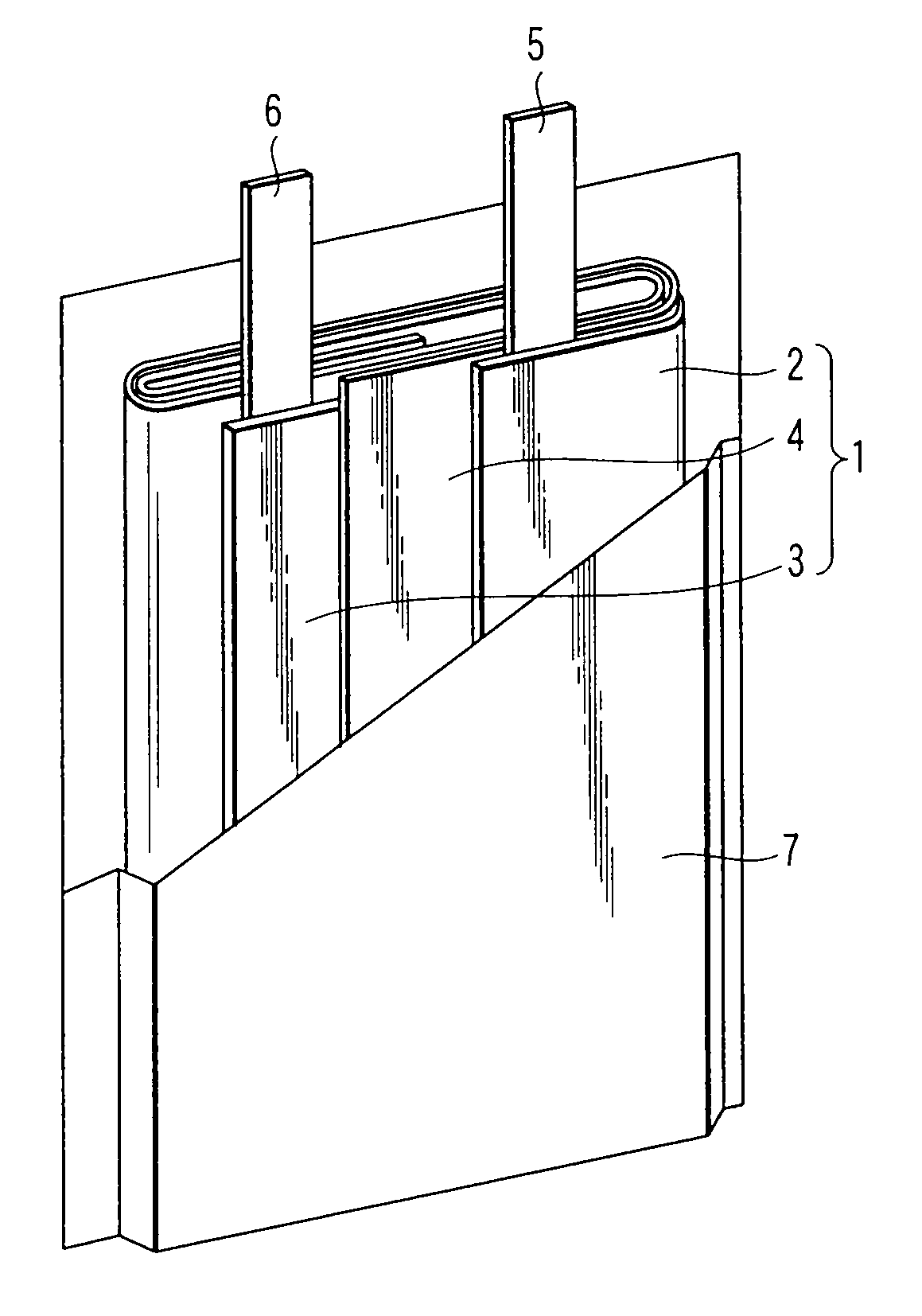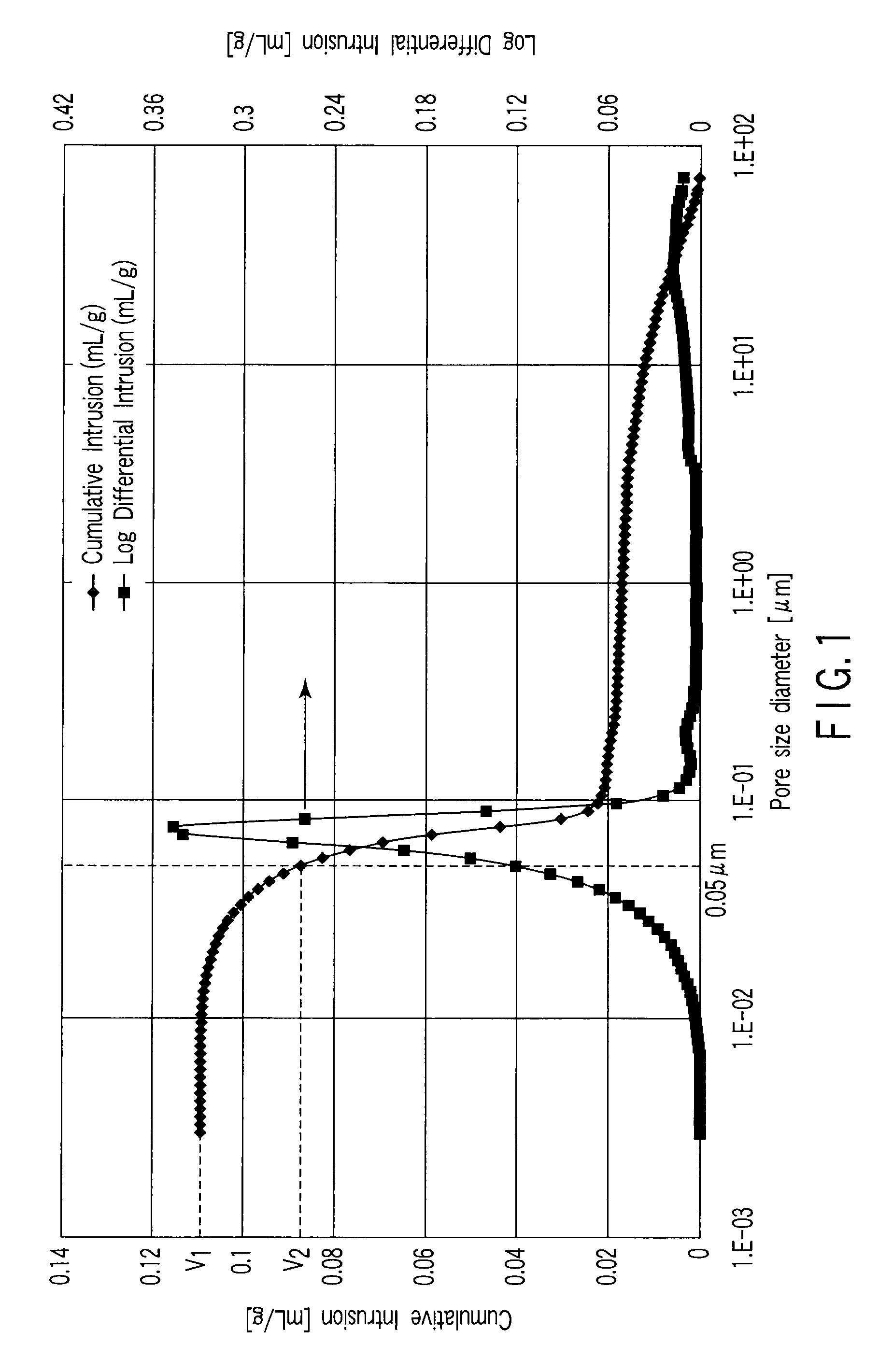Nonaqueous electrolyte battery, battery pack and vehicle
a technology of nonaqueous electrolyte and battery pack, which is applied in the direction of cell components, cell component details, electrochemical generators, etc., can solve the problems of large variation in the output characteristics of the battery, and the difficulty of developing a high-power battery
- Summary
- Abstract
- Description
- Claims
- Application Information
AI Technical Summary
Benefits of technology
Problems solved by technology
Method used
Image
Examples
second embodiment
[0103]A battery pack according to a second embodiment comprises the nonaqueous battery according to the first embodiment. The number of the nonaqueous electrolyte batteries may be two or more. It is desirable that the nonaqueous electrolyte battery according to the first embodiment be used as a unit cell and each unit cell be arranged electrically in series or in parallel to constitute a battery module.
[0104]The nonaqueous electrolyte battery according to the first embodiment is suitable for use as a battery module and the battery pack according to the second embodiment is superior in output performance and cycle performance. The reason will be explained.
[0105]When the negative electrode is improved in nonaqueous electrolyte impregnation ability and in the uniformity of the distribution of the negative electrode active material, overvoltage is scarcely applied to the negative electrode. As a result, the negative electrode can be prevented from falling into a local overcharge or over...
third embodiment
[0117]The vehicle according to the third embodiment comprises the battery pack according to the second embodiment. The vehicle as used herein includes two- to four-wheel hybrid electric cars, from two- to four-wheel electric cars, and motor-assisted bicycles.
[0118]FIGS. 9 to 11 show various type of hybrid vehicles in which an internal combustion engine and a motor driven by a battery pack are used in combination as the power source for the driving. The hybrid vehicle can be roughly classified into three types depending on the combination of the internal combustion engine and the electric motor.
[0119]FIG. 9 shows a hybrid vehicle 50 that is generally called a series hybrid vehicle. The motive power of an internal combustion engine 51 is once converted entirely into an electric power by a power generator 52, and the electric power thus converted is stored in a battery pack 54 via an inverter 53. The battery pack according to the second embodiment is used as the battery pack 54. The el...
fourth embodiment
[0129]FIGS. 15 and 16 show an example of a rechargeable vacuum cleaner according to a fourth embodiment. The rechargeable vacuum cleaner comprises an operating panel 75 which selects operation modes, an electrically driven blower 74 comprising a fun motor for generating suction power for dust collection, and a control circuit 73. A battery pack 72 according to the second embodiment as a power source for driving these units are housed in a casing 70. When the battery pack is housed in such a portable device, the battery pack is desirably fixed with interposition of a buffer material in order to prevent the battery pack from being affected by vibration. Known technologies may be applied for maintaining the battery pack at an appropriate temperature. While a battery charger 71 that also serves as a setting table functions as the battery charger of the battery pack according to the second embodiment, a part or all of the function of the battery charger may be housed in the casing 70.
[01...
PUM
 Login to View More
Login to View More Abstract
Description
Claims
Application Information
 Login to View More
Login to View More - R&D
- Intellectual Property
- Life Sciences
- Materials
- Tech Scout
- Unparalleled Data Quality
- Higher Quality Content
- 60% Fewer Hallucinations
Browse by: Latest US Patents, China's latest patents, Technical Efficacy Thesaurus, Application Domain, Technology Topic, Popular Technical Reports.
© 2025 PatSnap. All rights reserved.Legal|Privacy policy|Modern Slavery Act Transparency Statement|Sitemap|About US| Contact US: help@patsnap.com



